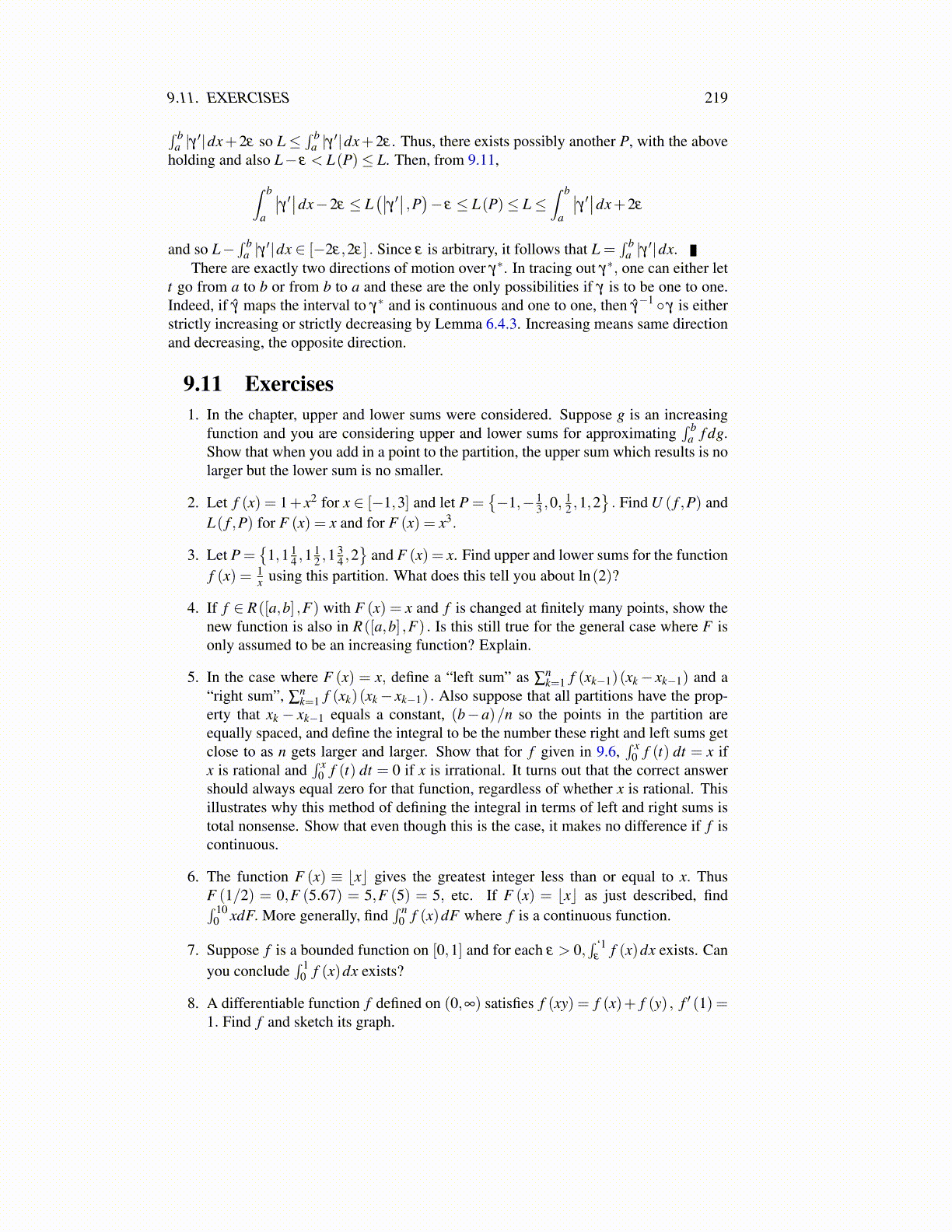
9.11. EXERCISES 219
23. Let p,q> 1 and satisfy 1p +
1q = 1. Consider the function x= t p−1. Then solving for t,
you get t = x1/(p−1) = xq−1. Explain this. Now let a,b≥ 0. Sketch a picture to showwhy
∫ b0 xq−1dx+
∫ a0 t p−1dt ≥ ab. Now do the integrals to obtain a very important
inequality bq
q + ap
p ≥ ab. When will equality hold in this inequality?
24. Suppose f ,g are two Riemann Stieltjes integrable functions on [a,b] with respect toF, an increasing function. Verify Holder’s inequality.
∫ b
a| f | |g|dF ≤
(∫ b
a| f |p dF
)1/p(∫ b
a|g|q dF
)1/q
,1p+
1q= 1, p > 1
Hint: Do the following. Let
A =
(∫ b
a| f |p dF
)1/p
,B =
(∫ b
a|g|q dF
)1/q
.
Then let a = | f |A ,b = |g|
B and use the wonderful inequality of Problem 23.
25. Let F (x) =∫ x3
x2t5+7
t7+87t6+1 dt. Find F ′ (x) .
26. Let F (x) =∫ x
21
1+t4 dt. Sketch a graph of F and explain why it looks the way it does.
27. Let a and b be positive numbers and consider the function F (x) =∫ ax
01
a2+t2 dt +∫ a/xb
1a2+t2 dt. Show that F is a constant.
28. Solve the following initial value problem from ordinary differential equations whichis to find a function y such that
y′ (x) =x4 +2x3 +4x2 +3x+2
x3 + x2 + x+1, y(0) = 2.
29. If F,G ∈∫
f (x) dx for all x ∈ R, show F (x) = G(x)+C for some constant, C. Usethis to give a different proof of the fundamental theorem of calculus which has forits conclusion
∫ ba f (t)dt = G(b)−G(a) where G′ (x) = f (x) .
30. Suppose f is continuous on [a,b]. Show there exists c ∈ (a,b) such that
f (c) =1
b−a
∫ b
af (x) dx.
Hint: You might consider the function F (x) ≡∫ x
a f (t) dt and use the mean valuetheorem for derivatives and the fundamental theorem of calculus. In a sense, thiswas done in the chapter, but this one is more specific and note that here c ∈ (a,b),the open interval.
31. Use the mean value theorem for integrals, Theorem 9.1.5 or the above problem toconclude that
∫ a+1a ln(t)dt = ln(x)≤ ln
(a+ 1
2
)for some x ∈ (a,a+1). Hint: Con-
sider the shape of the graph of ln(x) in the following picture. Explain why if x is